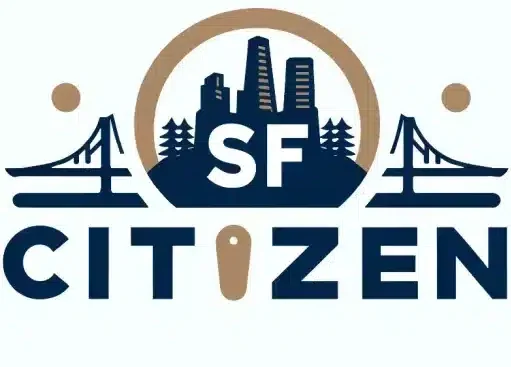Since adopting Vision Zero in 2014, San Francisco has seen a 30% reduction in traffic fatalities, thanks in part to the SFMTA’s Quick-Build Program. This innovative initiative aims to rapidly implement pedestrian and bicycle safety improvements on the city’s High Injury Network, where 75% of severe injuries and deaths occur.
In This Article
The SFMTA is committed to delivering quick-build projects while also working on comprehensive, longer-term street changes. By focusing on reversible, cost-effective measures, the agency believes these projects will significantly decrease the number of people fatally and severely injured on San Francisco streets.
Key Points
- Quick-Build Corridors are crucial in reducing traffic fatalities
- The High-Injury Network determines focus areas for safety improvements
- A variety of traffic safety measures are being implemented
Understanding the Vision Zero Quick-Build Program
The Vision Zero Quick-Build Program is designed to fast-track safety improvements on San Francisco’s streets. The program has two main components:
1. Quick-Build Corridors: Selected streets that receive a comprehensive package of safety improvements
2. Quick-Build Toolkit: A set of reversible, adjustable traffic safety measures that can be rapidly installed
SFMTA selects streets for Quick-Build Projects based on data from the High-Injury Network, prioritizing areas where engineering improvements can have the most significant impact on reducing traffic-related fatalities and severe injuries.
SFMTA’s Role in Enhancing Pedestrian Safety
The SFMTA employs various strategies to improve pedestrian safety through Quick-Build Projects:
- Pedestrian head starts: Giving pedestrians a few seconds’ lead time to enter the crosswalk before vehicles get a green light
- Daylighting: Improving visibility at intersections by removing parking spaces near crosswalks
- High-visibility crosswalks and pavement markings: Making pedestrians more visible to drivers
These measures aim to create a safer environment for people walking and reduce conflicts between pedestrians and vehicles.
Advancements in Bicycle Safety
Quick-Build Projects also focus on enhancing bicycle safety through:
- Protected bikeways: Physical barriers separating bicyclists from vehicle traffic
- Physical distancing lanes: Widened bike lanes that provide more space for bicyclists
- Road diets: Reducing the number of vehicle lanes to create space for bike lanes and calm traffic
The SFMTA is working to expand the bicycle safety network, making it more comfortable and convenient for people to choose cycling as a mode of transportation.
Quick-Build Corridors and Their Impact
The SFMTA has identified numerous Quick-Build Corridors throughout San Francisco, focusing on streets that are part of the High-Injury Network. Some success stories include:
- Valencia Street: Installation of protected bike lanes and pedestrian safety improvements
- Taylor Street: Road diet, transit improvements, and pedestrian safety measures
- 7th Street: Transit-only lanes, protected bike lanes, and pedestrian enhancements
These corridors demonstrate the positive impact that Quick-Build Projects can have on creating safer, more vibrant streets for all users.
Traffic Safety Improvements Across the High-Injury Network
In addition to Quick-Build Corridors, the SFMTA is implementing various traffic safety measures across the High-Injury Network:
- Reversible traffic measures: Adjustable bollards, paint, and signage to modify street layouts
- Crosswalk upgrades: High-visibility markings, raised crosswalks, and pedestrian refuge islands
- Traffic signal timing adjustments: Optimizing signal timing to prioritize pedestrian and bicycle safety
By targeting high-risk areas with data-driven solutions, the SFMTA aims to make swift, impactful changes that save lives.
Evaluating the Success of Traffic Safety Measures
The Safe Streets Evaluation Program is crucial in assessing the effectiveness of Quick-Build Projects and informing future improvements. This program involves:
- Collecting data on traffic volumes, speeds, and user behavior before and after project implementation
- Analyzing collision data to identify trends and measure safety impacts
- Gathering community feedback to understand public perception and concerns
Traffic law enforcement also plays a role in complementing physical safety measures, promoting compliance with new street designs and traffic rules.
Infrastructure Redesign for Long-Term Safety
While Quick-Build Projects provide rapid improvements, the SFMTA also works on long-term infrastructure redesign for lasting safety benefits. This includes:
- Transitioning successful quick-build measures into permanent installations
- Integrating transit boarding islands and traffic flow control measures
- Implementing larger-scale capital projects that address complex safety challenges
Successful examples of long-term safety improvements in San Francisco include the Polk Streetscape Project and the Masonic Avenue Streetscape Project.
FAQ
What is the Vision Zero Quick-Build Program?
The Vision Zero Quick-Build Program is an SFMTA initiative to rapidly implement reversible, adjustable traffic safety improvements on San Francisco’s High-Injury Network, aiming to reduce traffic-related fatalities and severe injuries.
How does the SFMTA prioritize streets for Quick-Build Projects?
The SFMTA prioritizes streets for Quick-Build Projects based on data from the High-Injury Network, focusing on areas where engineering improvements can have the most significant impact on reducing traffic-related fatalities and severe injuries.
What are some examples of traffic safety improvements in San Francisco?
Examples of traffic safety improvements in San Francisco include pedestrian head starts, protected bike lanes, high-visibility crosswalks, road diets, and transit boarding islands.
How does the High-Injury Network influence Quick-Build Projects?
The High-Injury Network, which comprises streets where 75% of severe injuries and deaths occur, helps the SFMTA prioritize locations for Quick-Build Projects and other safety improvements.
How can the public get involved in the Vision Zero Quick-Build Program?
The public can get involved by attending community meetings, providing feedback on proposed projects, and reporting safety concerns through the SFMTA’s website or 311 system. The SFMTA values community engagement in shaping and evaluating Quick-Build Projects.

